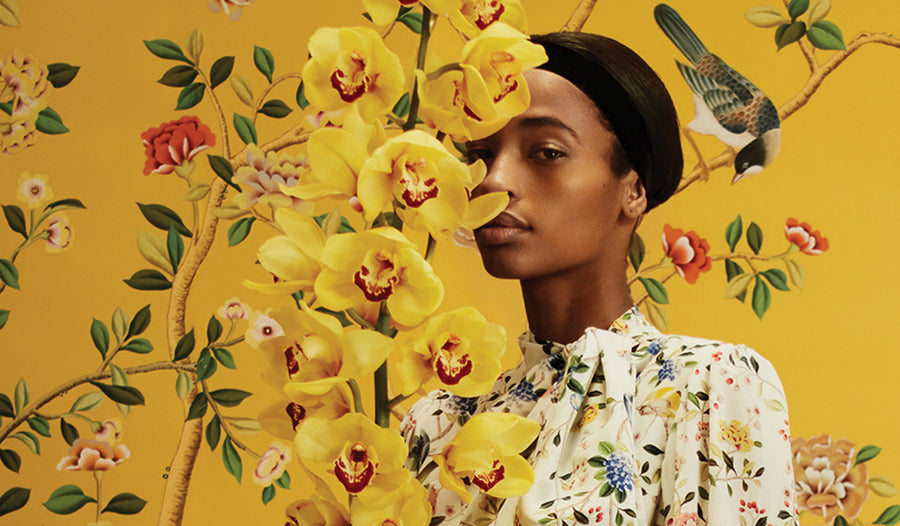
SPRING HAS SPRUNG

Spring has well and truly sprung this week! Fittingly, we also celebrate the birthday of William Morris, who was born on 24 March 1834. As we look forward to warmer, longer days and for our gardens, balconies and green spaces to be a riot of verdant colour once again, we decided to look back through the Selvedge archive and re-publish an extract of Susan Collier’s insightful article exploring our steadfast love of floral fabric:
 Image: Cray, furnishing fabric, William Morris, 1884, England. Museum no. CIRC.82-1953. © Victoria and Albert Museum, London.
Image: Cray, furnishing fabric, William Morris, 1884, England. Museum no. CIRC.82-1953. © Victoria and Albert Museum, London.
Francis Bacon declared the garden “the purest of human pleasures”. To delight in nature and organise some small part of it has been seen through the ages as a godly pursuit. “Bread feeds the body, indeed, but flowers feed also the soul”, says the Qur’an. Even among the secular gardening is revered :“The best thing one can do is to cultivate one's garden.” – Voltaire.

For artists flowers have provided unlimited inspiration – from the religious or moral symbolism of the 17th century Dutch and Flemish artists to the impressionists and Monet's sensuous immersion in a moment. In the last few years we have witnessed a veritable return to Eden as gardening has become a passion for many home owners - the garden is once more a sanctuary. Flowers seduce every sense, we are vulnerable to their appeal on every level – but above all visually.
A beautiful printed floral design on a perfectly matched cloth engages the eye and leads it effortlessly through a series of spaces, stopping from time to time, bending this way and that – tracing and moving through the repeat, enjoying the chance to freewheel and explore. It provides a route towards reflection and an opportunity to find, in this utterly private reflection, a transformational aesthetic experience. The aesthetic is crucial to our wellbeing: we have all had our breath taken away by the sheer beauty of a landscape, a satisfying planting, a perfect fabric, poem or piece of music. This response to beauty is at the heart of our emotional health, allowing us to withdraw from the purely intellectual.

The English textile industry developed through imports from India and Asia, and in parallel with those of France, Italy and Holland. The original imported Indian chintz was decorated with exotic flowers in a varied palette and a permanent glaze. These printed calicos were cottons with smallish sprigs using one colour or more, with patterns both painted and applied by wood blocks. The colour was mostly derived from madder. By using different mordants – metallic oxides or minerals – the dyes were made fast and different colours were developed. The language of this cloth is still with us, so embedded within a traditional English style that its Indian origins are often overlooked.

These early imported chintz cloths almost always show an abundant curving tree framed within patterned borders. This framing within sprigged borders allows the tree to establish its dominant central line as it curves from side to side, issuing branches and leaves that hold gloriously varied and stylised flower forms, sometimes bursting with stamenlike shoots with bold curling, unfurling, stylised leaves. This flowering tree known as Palampore cloth has an exotic heritage combining Hindu, Islamic and Chinese cultures, traded and crosstraded with European textiles. But for our purposes it was mainly imported from India and gave us the structure of one of the rudiments of England’s most enduring style, the floral.
Extract from the article The Perennial: English Floral Fabric, written by Susan Collier in Issue 06 Blossom.
--
This extract was first published in Selvedge Issue 6 Blossom.
Why not stop and smell the roses and listen to episode 5 of the Selvedge podcast? We talk to Dr Sylvia Houghteling about the unlimited inspiration that flowers provide to artists and textile designers. Listen to the episode here:

